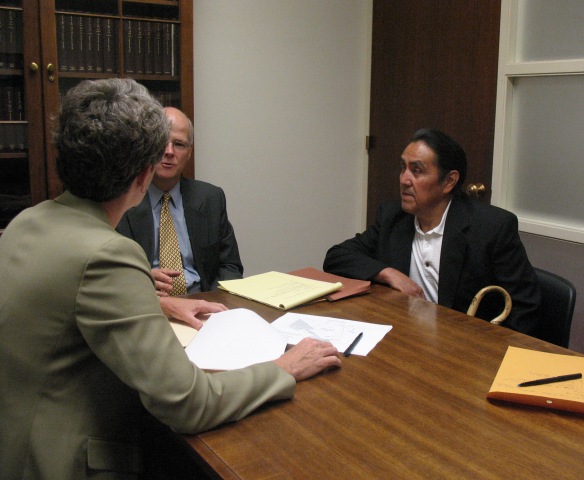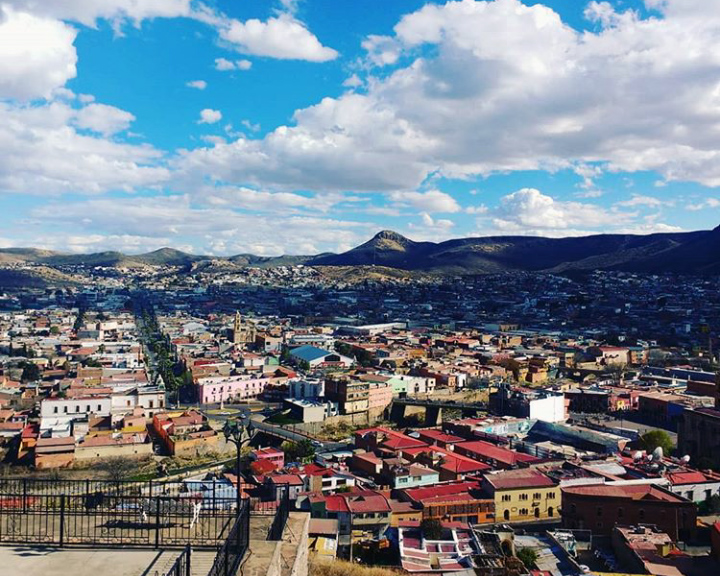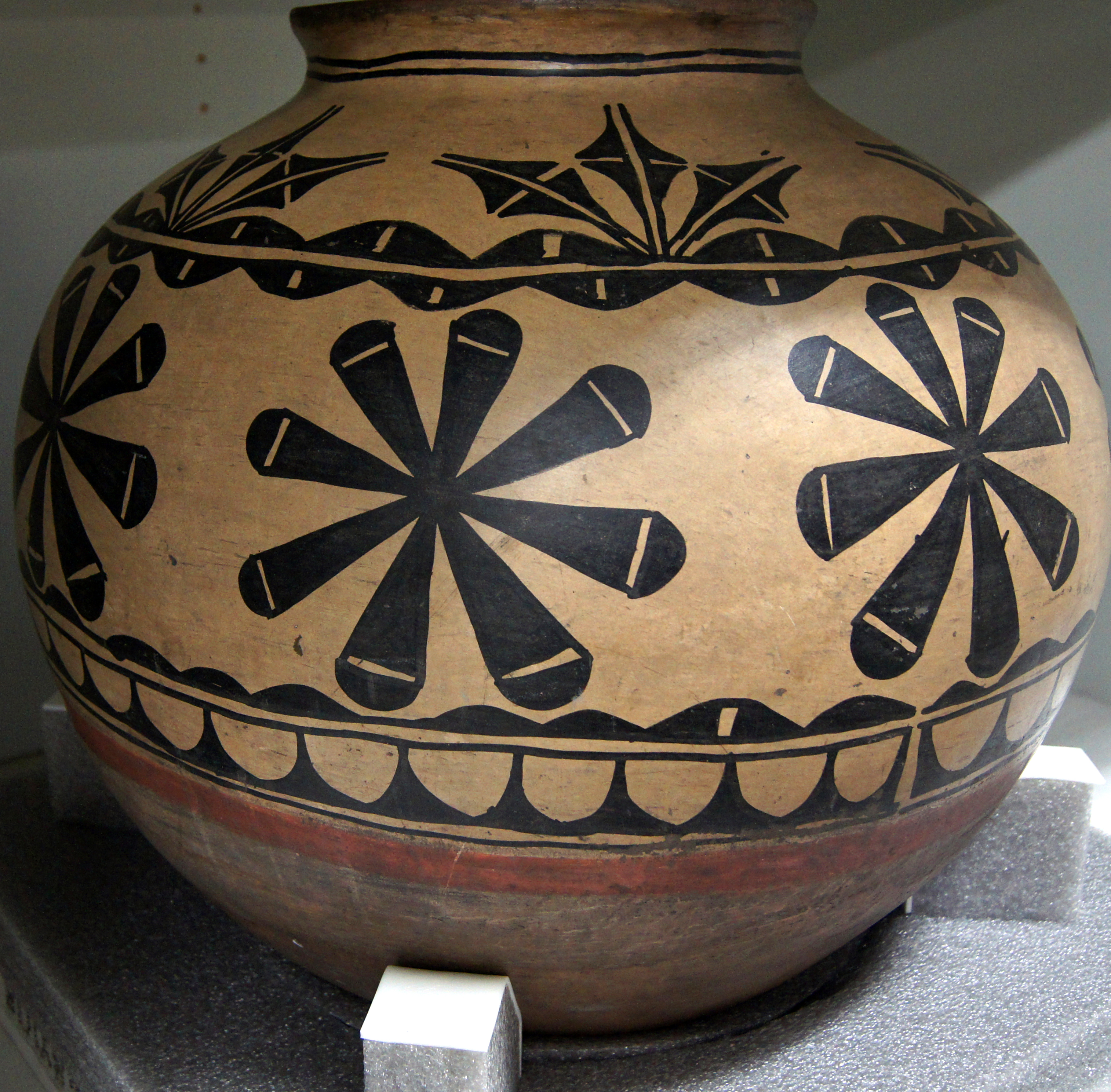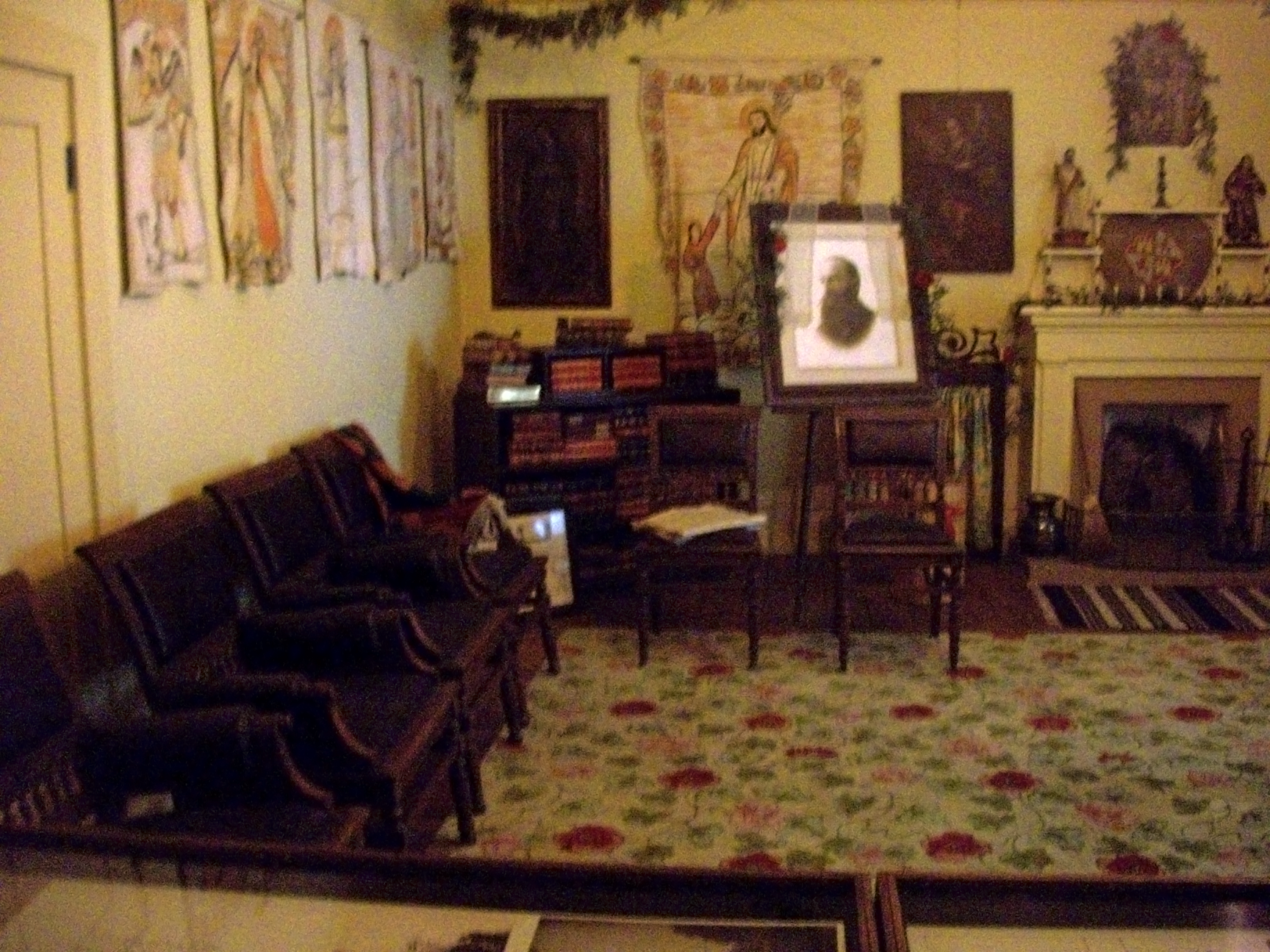|
Antonio De Otermín
Antonio de Otermín was the Spanish Governor of the northern New Spain province of Santa Fe de Nuevo México, today the U.S. states of New Mexico and Arizona, from 1678 to 1682. He was governor at the time of the Pueblo Revolt, during which the religious leader Popé led the Pueblo people in a military ouster of the Spanish colonists. Otermín had to cope with the revolt with help of the settlers and their descendants in New Mexico, fighting against the Pueblo in some military campaigns and establishing a refuge for the surviving settlers and loyal native Pueblo in the vicinity of the modern Ciudad Juárez, current Mexico. Biography Early life It is not known when or where he was born. It is assumed that he was born roughly between 1620 and 1630 in the Otermín family home, which in this time was recorded as Otromin House. It is located on the foothills of the Massif de Aralar, natural border between Gipuzkoa and Navarre, Spain. On the Gipuzkoa side is the house ''Otromin Haundi ... [...More Info...] [...Related Items...] OR: [Wikipedia] [Google] [Baidu] |
List Of Spanish Governors Of New Mexico
Spanish Governors of New Mexico were the political head of government, chief executives of the province of Santa Fe de Nuevo México (New Mexico) between 1598, when it was established by an expedition by Juan de Oñate, and 1822, following Mexico's Plan of Iguala, declaration of independence. New Mexico became a New Mexico Territory, territory of the United States beginning in U.S. provisional government of New Mexico, 1846, and a New Mexico, state in 1912. History In 1598, Juan de Oñate pioneered 'The Royal Road of the Interior Land', or ''Camino Real de Tierra Adentro, El Camino Real de Tierra Adentro'', between Mexico City and the Tewa village of 'Ohkay Owingeh', or Ohkay Owingeh, New Mexico, San Juan Pueblo, founding the Nuevo México Province under the authority of Philip II of Spain, Philip II. He also founded the settlement ''(a Spanish pueblo)'' of San Juan, New Mexico, San Juan on the Rio Grande near the Native Americans in the United States, Native American Pueblo. In 1 ... [...More Info...] [...Related Items...] OR: [Wikipedia] [Google] [Baidu] |
Galisteo Basin
The Galisteo Basin is a surface basin and a closely related groundwater basin in north-central New Mexico. Its primary watercourse is the Galisteo River or Galisteo Creek, a perennial stream, for part of its course, that flows from the eastern highlands down into the Rio Grande about three miles above the Santo Domingo Pueblo. The Galisteo basin covers approximately 467,200 acres and runs from San Miguel County in the east, across Santa Fe County, and into Sandoval County at its westernmost point, the Rio Grande. Northeast of Galisteo Basin rise the Sangre de Cristo Mountains and to the southwest lie the Sandia Mountains. Because of its location lying between mountain ranges and connecting the upper Rio Grande Valley with the Great Plains, the Galisteo Basin was used as a trade route by prehistoric and historic indigenous and later also by the Spanish explorers. Geology left, looking out over the Galisteo Basin at sunset, alt=the Ortiz Mountains, Sandia Mountains, a ... [...More Info...] [...Related Items...] OR: [Wikipedia] [Google] [Baidu] |
Sandia Pueblo
Sandia Pueblo (; Tiwa: Tuf Shur Tia) is a federally recognized tribe of Native American Pueblo people inhabiting a reservation of the same name in the eastern Rio Grande Rift of central New Mexico. It is one of 19 of New Mexico's Native American pueblos, considered one of the state's Eastern Pueblos. The population was 427 as of the 2010 census. The people are traditionally Tiwa speakers, a language of the Tanoan group, although retention of the traditional language has waned with later generations. They have a tribal government that operates Sandia Casino, Bien Mur Indian Market Center, and Sandia Lakes Recreation Area, as well as representing the will of the Pueblo in business and political matters. Name The Tiwa name for the pueblo is ''Tuf Shur Tia'', or "Green Reed Place", in reference to the green ''bosque'' (). However, older documents claim that the original name of the pueblo was ''Nafiat'', (Tiwa: "Place Where the Wind Blows Dust"). It became known as ''Sandía ... [...More Info...] [...Related Items...] OR: [Wikipedia] [Google] [Baidu] |
Isleta Pueblo
Pueblo of Isleta ( , ; ) is an unincorporated community and Tanoan pueblo in Bernalillo County, New Mexico, United States, originally established in the . The Southern Tiwa name of the pueblo is (Shee-eh-whíb-bak) meaning "a knife laid on the ground to play ''whib''", a traditional footrace. Its people are a federally recognized tribe. Pueblo of Isleta is located in the Middle Rio Grande Valley, south of Albuquerque. It is adjacent to and east of the main section of Laguna Pueblo. The pueblo was built on a knife-shaped lava flow running across an ancient Rio Grande channel. The Isleta Pueblo Historic District is listed on the National Register of Historic Places. On January 15, 2016, the tribe's officials and federal government representatives held a ceremony to mark the government's taking into federal trust some 90,151 acres of land (140 square miles) which the Pueblo had then purchased. It enlarged their communal territory by 50%. The tribe had worked for more t ... [...More Info...] [...Related Items...] OR: [Wikipedia] [Google] [Baidu] |
Sonora, Mexico
Sonora (), officially Estado Libre y Soberano de Sonora (), is one of the 31 states which, along with Mexico City, comprise the Federal Entities of Mexico. The state is divided into 72 municipalities; the capital (and largest) city of which is Hermosillo, located in the center of the state. Other large cities include Ciudad Obregón, Nogales (on the Mexico-United States border), San Luis Río Colorado, and Navojoa. Sonora is bordered by the states of Chihuahua to the east, Baja California to the west (of the north portion) and Sinaloa to the southeast. To the north, it shares a border with the United States, and on the southwest has a significant share of the coastline of the Gulf of California. Sonora's natural geography is divided into three parts: the Sierra Madre Occidental in the east of the state; plains and rolling hills in the center; and the coast on the Gulf of California. It is primarily arid or semiarid deserts and grasslands, with only the highest elevation ... [...More Info...] [...Related Items...] OR: [Wikipedia] [Google] [Baidu] |
Parral, Chihuahua
Hidalgo del Parral is a city and seat of the municipality of Hidalgo del Parral in the Mexican state of Chihuahua. It is located in the southern part of the state, from the state capital, the city of Chihuahua, Chihuahua. As of 2015, the city of Hidalgo del Parral had a population of 109,510 inhabitants, while the metro area had a population of 129,688 inhabitants. During the colonial period the city was a significant supplier of silver to the Spanish empire and was known as San José del Parral. The name of the city was changed after independence from Spain, in honour of Fr Miguel Hidalgo, widely considered the 'Father of the Country'. Geology Hidalgo del Parral mushroomed from the base of a hill of silver known as the Cerro la Prieta. The hill, is a part of the eastern foothill belt of the Sierra Madre Occidental, characterized by thick eroded deposits of tertiary volcanics. The bed rocks of both sedimentary and volcanic origin supply both lead and lead-free silver vein ... [...More Info...] [...Related Items...] OR: [Wikipedia] [Google] [Baidu] |
El Paso, Texas
El Paso (; ; or ) is a city in and the county seat of El Paso County, Texas, United States. The 2020 United States census, 2020 population of the city from the United States Census Bureau, U.S. Census Bureau was 678,815, making it the List of United States cities by population, 22nd-most populous city in the U.S., the most populous city in West Texas, and the List of cities in Texas by population, sixth-most populous city in Texas. Its metropolitan statistical area covers all of El Paso and Hudspeth County, Texas, Hudspeth counties in Texas, and had a population of 868,859 in 2020. El Paso stands on the Rio Grande across the Mexico–United States border from Ciudad Juárez, the most populous city in the Mexican state of Chihuahua (state), Chihuahua. On the U.S. side, the El Paso metropolitan area forms part of the larger El Paso–Las Cruces, Texas–New Mexico combined statistical area, El Paso–Las Cruces combined statistical area with Las Cruces, New Mexico, which has a ... [...More Info...] [...Related Items...] OR: [Wikipedia] [Google] [Baidu] |
Mestizo
( , ; fem. , literally 'mixed person') is a term primarily used to denote people of mixed European and Indigenous ancestry in the former Spanish Empire. In certain regions such as Latin America, it may also refer to people who are culturally European even though their ancestors were Indigenous American or Austronesian. The term was used as an ethno-racial exonym for mixed-race that evolved during the Spanish Empire. It was a formal label for individuals in official documents, such as censuses, parish registers, Inquisition trials, and others. Priests and royal officials might have classified persons as mestizos, but individuals also used the term in self-identification. With the Bourbon reforms and the independence of the Americas, the caste system disappeared and terms like "mestizo" fell in popularity. The noun , derived from the adjective , is a term for racial mixing that did not come into usage until the 20th century; it was not a colonial-era term.Rappaport, Joa ... [...More Info...] [...Related Items...] OR: [Wikipedia] [Google] [Baidu] |
Santo Domingo, New Mexico
Santo Domingo Pueblo, also known Kewa Pueblo (also spelled Kiua, Eastern Keres , Keres: ''Díiwʾi'', Navajo: ''Tó Hájiiloh'') is a federally recognized tribe of Pueblo people in northern New Mexico. A population of 2,456 (as of 2010) live in structures some of which date from circa 1700; in Sandoval County (~35 miles (56 km) northeast of Albuquerque, New Mexico, off Interstate 25 southwest of Santa Fe) described by the U.S. Census Bureau as a census-designated place. A area of the pueblo was listed on the National Register of Historic Places in 1973. The listing included 80 contributing buildings. With Culture The population of the pueblo is composed of Native Americans who speak Keres, an eastern dialect of the Keresan languages. Like several other Pueblo peoples, they have a matrilineal kinship system, in which children are considered born into the mother's family and clan, and inheritance and property pass through the maternal line. The pueblo celebrates an a ... [...More Info...] [...Related Items...] OR: [Wikipedia] [Google] [Baidu] |
Cochiti, New Mexico
Cochiti (; Eastern Keresan: Kotyit ʰocʰi̥tʰ Western Keresan K’úutìim’é ʼúːtʰìːm̰é Navajo: ''Tǫ́ʼgaaʼ'' /tʰṍʔkɑ̀ːʔ/) is a census-designated place (CDP) in Sandoval County, New Mexico, United States. A historic pueblo of the Cochiti people, one of the Keresan Nations, it is part of the Albuquerque Metropolitan Statistical Area. The population was 528 at the 2010 census. Located southwest of Santa Fe, the community is listed as a historic district on the National Register of Historic Places. Geography According to the United States Census Bureau, the CDP has a total area of , all land. Climate According to the Köppen Climate Classification system, Cochiti has a cold semi-arid climate, abbreviated "BSk" on climate maps. The hottest temperature recorded in Cochiti was on July 12, 2020, while the coldest temperature recorded was on December 10, 1978, and February 3, 2011. Demographics At the 2010 census, there were 528 people, 157 househo ... [...More Info...] [...Related Items...] OR: [Wikipedia] [Google] [Baidu] |
Ciudad Juárez
Ciudad Juárez ( , ; "Juárez City"), commonly referred to as just Juárez (Lipan language, Lipan: ''Tsé Táhú'ayá''), is the most populous city in the Administrative divisions of Mexico, Mexican state of Chihuahua (state), Chihuahua. It was known until 1888 as ("The North Pass"). It is the seat of the Juárez Municipality, Chihuahua, Juárez Municipality with an estimated metropolitan population of 2.5 million people. Juárez lies on the Rio Grande, Rio Grande (Río Bravo del Norte) river, south of El Paso, Texas, United States. Together with the surrounding areas, the cities form El Paso–Juárez, the second largest binational metropolitan area on the Mexico–United States border, Mexico–U.S. border (after San Diego–Tijuana), with a combined population of over 3.4 million people. Four international points of entry connect Ciudad Juárez and El Paso: the Bridge of the Americas (El Paso–Ciudad Juárez), Bridge of the Americas, the Ysleta–Zaragoza Internatio ... [...More Info...] [...Related Items...] OR: [Wikipedia] [Google] [Baidu] |
Palace Of The Governors
The Palace of the Governors () is an adobe structure built in the Territorial Style of Pueblo architecture on Palace Avenue in Santa Fe, New Mexico. Located within the Santa Fe Historic District along the Santa Fe Plaza between Lincoln and Washington avenues, it served as the seat of government for New Mexico for centuries, having been established as the capitol building of '' Nuevo México'' in 1610. It was New Mexico's seat of government until 1901. History In 1610, Pedro de Peralta, the newly appointed governor of ''Santa Fe de Nuevo México'' covering most of the modern American Southwest, began construction on the Palace of the Governors, though some recent historical research has suggested that construction began midway through his term in 1618. In the following years, the Palace changed hands as the territory of New Mexico did, seeing the Pueblo Revolt of 1680, the Spanish return from 1693 to 1694, Mexican independence in 1821, American territorial status in 1848, and U ... [...More Info...] [...Related Items...] OR: [Wikipedia] [Google] [Baidu] |







